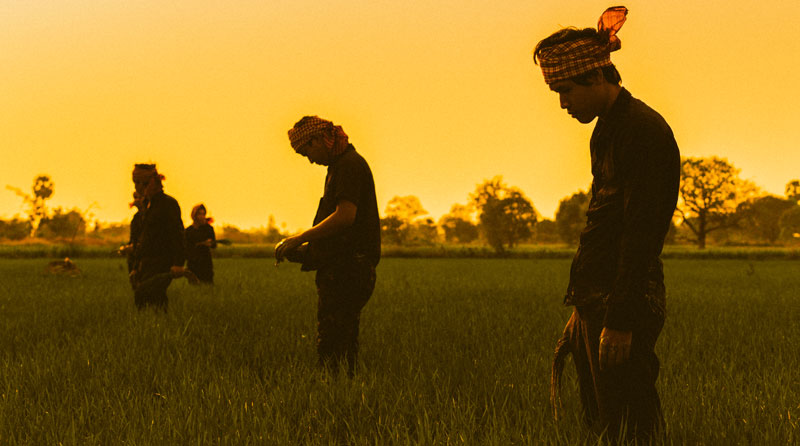Mok Reah commune, Battambang province – “This tree bore witness to all these atrocities, but it also bore witness to love that was separated and yet it says nothing…. It’s almost like a god character to me,” said Bunhom Chhorn, perched on the twisted trunk of a tamarind tree here last month.
This tranquil spot in Battambang’s remote Rokha Kiri district was where the Cambodian-Australian filmmaker was sent as a child after the Pol Pot regime took over the country. At the time, he knew it only as Camp 32, a terrifying site where young Khmer Rouge soldiers would force their perceived enemies to kneel beneath the tamarind tree before clubbing them to death. Mr. Chhorn would often hear the sound of the killings as he slept under the stars.

The filmmaker told the story of his yearslong effort to find the camp in the 2015 documentary “Camp 32,” which premiered at the Cambodia International Film Festival in December. Now, he is returning to the site for his latest project, “Under the Tamarind Tree.” The short film depicts two childhood sweethearts whose relationship is cut short when the Khmer Rouge show up and force them to marry other partners during a group wedding.
Before the communist soldiers enter their village, the two characters regularly meet at the tamarind tree. But when the regime tightens its grip on every aspect of village life and the two are married off to other spouses, their sole means of communication is placing secret symbols of affection for one another within the tree’s deep crevices.
Mr. Chhorn, who served as producer on “Under the Tamarind Tree,” fled with his family to the Khao I Dang refugee camp on the Thai border as Vietnamese forces moved west in early 1979. He eventually immigrated with his mother and siblings to Australia. He said the film was inspired by the experiences of his family during the Khmer Rouge period, when four of his sisters were forced to marry, with vastly different outcomes.
“One had seven children and the other had two children and were very happy, but two wasn’t very good,” he said.
“My sister in Australia had to have surgery so that she could enjoy sex—it was that bad. My other sister just doesn’t want to remember it, because as soon as she got pregnant they moved her husband away and they kept her on guard and they [told her] they only want[ed] her to deliver the baby, then they’ll kill her too,” he added.

The film deals with a number of issues that were common among victims of forced marriage in Democratic Kampuchea, including forced consummation, in which the regime’s spies would listen in on newlyweds to ensure they were having sex. Refusal could result in death.
Mr. Chhorn said he chose to make the tree a focal point in the film because it had borne witness to so many horrors at Camp 32, leading him to see it almost as a conscious being.
“It is an unspoken character and I thought it’s great because I’ve always said, ‘If this tree could talk, it would have been a witness to so much that it could tell.’ It becomes a natural point for me to say, ‘Hey, that’s our fourth character,’” he said.
“It bore witness to all these atrocities, it bore witness to love that was separated—and yet it says nothing. It’s just there.”
While walking around the remote site, which was formerly surrounded by forest that has now given way to barren plains, the filmmaker recounted harrowing details of his childhood at the camp.
“The babies would try to drink from there in the night and would drown,” he said, pointing at a swamp.
“Dogs did well during the KR. They would eat the bodies,” he said as a pack of dogs barked in the distance.
Mr. Chhorn said that despite the difficult memories, returning to Camp 32 as a filmmaker had been a healing experience.
“We talk about cathartic feelings and I get that every time I come here. I get that this place shouldn’t make me fearful of life itself; it should remind me that I do have strength. There’s inner strength because I’ve lived through here,” he said.
“Every time I come here now I feel better in terms of fear. I feel better and better all the time.”




